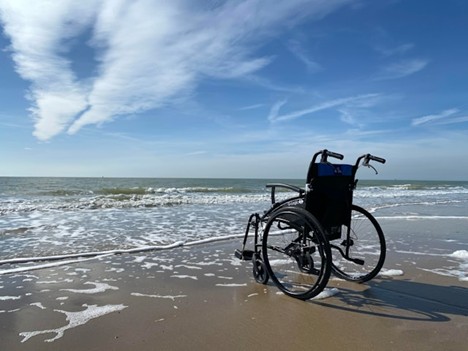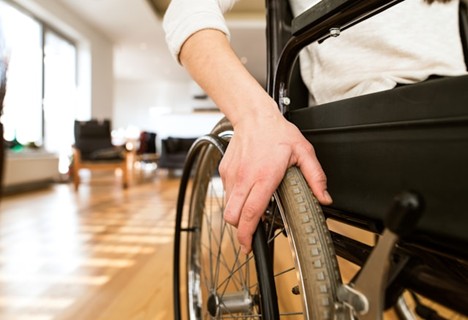The Jersey Shore has long attracted vacationers, seasonal homeowners, and those who love the charm of year-round coastal living. As demand grows for upscale, future-ready properties, the architecture is evolving dramatically. The classic one-story beach cottage is giving way to a new wave of multi-level residences that rise to meet both style and functionality.
Today, vertical design is rapidly becoming the norm in beach towns like LBI, offering homeowners expanded living space, elevated views, and a host of modern comforts. At the heart of this trend are cutting-edge elevator systems, which enhance convenience, accessibility, and long-term value. NJ elevator companies are playing a crucial role in this transformation, providing the innovative lift solutions that make these multi-story homes both practical and luxurious.
The Shift Toward Vertical Living
Maximizing Limited Land
Beachfront property is scarce and often expensive. To make the most of tight lot lines and zoning restrictions, building up rather than out is the smartest way to maximize square footage. Multi-level construction allows for expanded living areas, separate guest suites, game rooms, offices, and more, all within a relatively compact footprint.
This trend is especially pronounced on LBI, where demand for high-end real estate has driven a wave of redevelopment. Many original single-story cottages are being replaced with three or four-story homes designed to accommodate larger families and modern lifestyles.
Elevated Views and Added Value
There’s no denying the appeal of a panoramic coastal view. The higher you go, the more of the ocean, bay, or skyline you can see and homes with upper-level decks or rooftop lounges command premium prices.
A well-designed upper floor becomes more than just another living area; it transforms into an exclusive, scenic retreat. Buyers are increasingly prioritizing this kind of space, and real estate agents know it: listings that mention sweeping views or top-level lounges often close faster and at higher prices.
Making Multi-Level Living Livable
As exciting as multi-story living is, it also introduces logistical challenges. Carrying groceries, laundry, or luggage up multiple flights can quickly turn novelty into nuisance. This is where modern mobility solutions come into play.
Today’s homeowners expect effortless movement between floors, and innovative vertical transport systems are quietly revolutionizing the way these homes function. These systems are sleek, space-saving, and often designed to blend seamlessly with interior finishes—offering a solution that’s both practical and aesthetically pleasing.
Aging in Place at the Shore
One of the biggest benefits of these mobility upgrades is long-term livability. Many LBI homeowners are retirees or plan to use their beach home well into their later years. Multi-level living, when paired with smart design, enables them to enjoy every level of their home without physical strain.
Mobility systems ensure that all floors remain accessible regardless of age or physical ability. This allows residents to age in place gracefully, without needing to retrofit the home later or consider moving as mobility decreases.
Multi-Generational Living
It’s not uncommon for extended families to share a beach home, especially during peak season. From grandparents to toddlers, every family member has different needs when it comes to getting around. Vertical mobility systems offer peace of mind, ensuring everyone can enjoy the full home safely and comfortably.
This convenience fosters inclusivity, letting older relatives join family dinners on the top floor or help out with the kids in lower-level playrooms without worry.
Elevating Everyday Convenience
Beyond accessibility, vertical convenience transforms daily routines. Consider the practical perks:
Grocery Hauls: No more carrying heavy bags up flights of stairs after a supermarket run.
Laundry Transfers: Move laundry from a bedroom closet to a basement utility room with ease.
Entertaining: Serving cocktails on the rooftop deck? Transport trays, drinks, and supplies effortlessly between the kitchen and upper floors.
Luggage: Weekend visitors? Their bags can move up to guest suites without anyone breaking a sweat.
These solutions also make property management easier for seasonal renters or owners who host frequently, ensuring guests have a seamless and luxurious experience throughout their stay.
Streamlined Aesthetics and Quiet Tech
Today’s vertical transport systems are designed to integrate into a home’s interior without disrupting the design. Compact footprints, quiet operation, and customizable finishes allow these features to blend with beach house aesthetics, whether the style is modern coastal, transitional, or traditional.
Technology also plays a role. Many systems offer keyless entry, remote controls, and even smart-home integrations that allow residents to call for transport from their smartphone. This type of convenience was once found only in high-rise condos or luxury hotels – now it’s available in private homes on the Jersey Shore.
Flood Zones & FEMA Compliance
Another often-overlooked advantage of vertical design is resilience in the face of rising water levels. Homes in flood-prone areas like LBI are increasingly being built on pilings or elevated foundations to meet FEMA standards.
In these cases, vertical mobility becomes essential. Whether entering from a raised entryway or accessing higher living spaces after parking at ground level, these solutions ensure that elevated designs remain accessible even when stairs would be a barrier.
This isn’t just about convenience – it’s about compliance, safety, and future readiness.
Boosting Resale and Rental Potential
Vertical living, paired with smart transport systems, doesn’t just benefit current residents, it significantly increases a home’s resale and rental appeal.
Buyers looking for second homes or investment properties are prioritizing features that offer luxury and longevity. They want spaces that work for all age groups, offer stunning views, and provide practical convenience. Including multi-level access in a home’s design ticks all those boxes.
For investors or owners listing vacation rentals, this feature can also be a differentiator. Marketing a property as “accessible to all floors” instantly broadens the potential guest base and increases weekly rates.
Coastal Living, Elevated
The rise of multi-level design on Long Beach Island and across New Jersey’s beach towns isn’t just about making homes taller, it’s about making them smarter, more beautiful, and better suited to modern lifestyles.
Whether it’s creating seamless access between living spaces, offering stunning top-floor views, or preparing a home for aging in place, vertical mobility systems are quietly becoming a must-have feature in coastal construction.
Homeowners building or renovating along the shoreline would be wise to think upward, because in today’s market, convenience and elevation go hand in hand.









